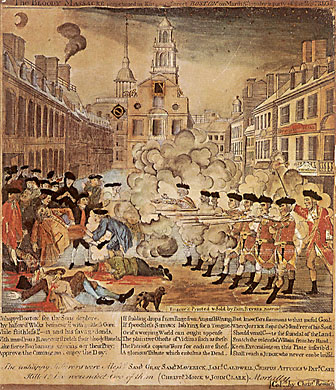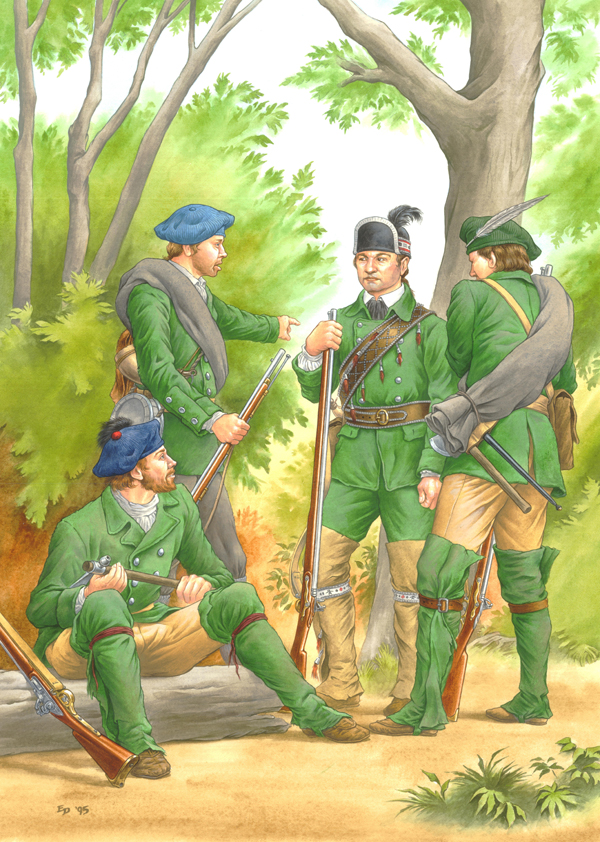Dear families-
I
will be posting a series of videos that support our learning about the
French and Indian War and the Revolutionary War. By doing so, students
can readily access key information for review or just a second look --
and all of you can continue to check out the kinds of things we're
talking about. I'll post assignments at the bottom of each blog.
~
Soon after the defeat at Fort Necessity, Britain learned that 78 French troops had been deployed to attack the British fort Oswego, in Canada.
The British Parliament responded by providing more money to the
colonies to fund an expanded militia. They also sent British regiments
to the colonies. In February 1755, the first British general to ever set
foot in the colonies, Edward Braddock, arrived in Virginia
to take charge. Braddock had had 45 years of experience in European
style warfare, but was completely ignorant of how to fight in the North
American wilderness. Here, “Indian fighting” took the place of formal,
face-to-face combat. Upon his arrival, Braddock developed a three-part
strategy for defeating the French. The Massachusetts regiments were sent to reinforce the defenses at Oswego, and to capture Fort Niagara on the south shore of Lake Erie. Colonel William Johnson was assigned to capture Fort Frederick at Crown Point, on the banks of Lake Champlain. Braddock himself was to take Fort Duquesne in Pennsylvania.
The battle for Fort Duquesne was the first significant battle of 1755. Though
the British outnumbered the French by more than two to one (2,200 men
to 1,000 men), the French defeated them easily. As Braddock’s men
marched toward the Monongahela River
in formal columns, the French ambushed them using the surrounding trees
as cover. Braddock refused to allow his men to break ranks and seek
cover. Panic ensued as the soldiers were fired upon relentlessly by an
invisible (hidden behind trees and rocks) enemy. In the end, 977 British soldiers were killed, while only 9 French soldiers lost their lives. Braddock was also killed.
The battle for Fort Duquesne was the first significant battle of 1755. Though
the British outnumbered the French by more than two to one (2,200 men
to 1,000 men), the French defeated them easily. As Braddock’s men
marched toward the Monongahela River
in formal columns, the French ambushed them using the surrounding trees
as cover. Braddock refused to allow his men to break ranks and seek
cover. Panic ensued as the soldiers were fired upon relentlessly by an
invisible (hidden behind trees and rocks) enemy. In the end, 977 British soldiers were killed, while only 9 French soldiers lost their lives. Braddock was also killed.
https://www.youtube.com/watch?feature=player_embedded&v=T33NCbQzOIg
Battle of the Monongahela AKA Battle of the Wilderness– July 9, 1755
On
July 9, 1755, Braddock's men crossed the Monongahela without
opposition, about ten miles south of Fort Duquesne. The advance guard of
300 Grenadiers and colonials with two cannon under Lieutenant Colonel
Thomas Gage began to move ahead, and unexpectedly came upon the French
and Indians, who were hurrying to the river. The Battle of the
Monongahela, or the Battle of the Wilderness, was officially begun.
Another Tragedy: The Acadians Deportation--1754
The Acadians are the descendants of the French who settled in Acadia located in the Canadian Maritime provinces of Nova Scotia, New Brunswick, Prince Edward Island, and in the state of Maine. Acadia was founded in a region geographically separate from Quebec.
Québecers and Acadians have different cultures, but during the
deportation, many refugees move in Québec. Today almost all Québecers can
say they have an Acadian ancestor. In the Great Expulsion of 1755-1763,
mostly during the Seven Years' War, British colonial officers, New England legislators and militia deported more than 14,000 Acadians from the maritime region.
Many later settled in Louisiana,
where they became known as Cajuns. University of Maine at Fort Kent
history professor Roger Paradis said that this was a clear case of
ethnic cleansing and genocide because an attempt was made to make
French Acadians disappear by scattering them throughout the 13 colonies.
It was unnecessarily cruel in the sense that ships were overloaded,
which resulted in disease, death, and the sinking of vessels. Families
were broken up and the Acadians were sent to an alien and unfriendly
land of exile.
http://www.youtube.com/watch?v=RnpW5IVyWtU
ASSIGNMENTS FOR THE WEEK OF
APRIL 28--MAY 2
SPELLING
Monday: Copier down. Worktime.
Tuesday: Copier down. Work on Reading project due tomorrow.
Wednesday: Time to finish up book projects
Thursday: Pages 137-138
Friday: Pages 139F & 139G
READING
Book projects (Acrostic summaries) due on Wednesday, April 30th.
LANGUAGE ARTS
Monday: Share "Telephone" poems. Write a sensory paragraph titled, "Entering the Classroom."
Tuesday: Type sensory paragraph and turn into a poem. ("Prose to Poetry" activity) Begin work on 14 vocabulary words--due Monday, May 5th.
Wednesday: Fort Necessity Activity. (Gr 6) "Then & Now" Map activity due Thursday, May 8.
Thursday: Introduce Poetry Unit (which we've already started) with handout listing due dates
Friday: Work on Poetry Unit -- look online and in books and choose a poem to analyze. FYI: Poems must be OKed by me.
SOCIAL STUDIES
Monday: Willow came. No class.
Tuesday: Videos and information from this blog.
Wednesday: Fort Necessity activity. (Gr 5) "Then & Now" Map activity due Thursday, May 8.
Thursday & Friday: The Acadians Deportation--1754 & Battle of the Monongahela AKA Battle of the Wilderness– July 9, 1755
Go to this site for maps to answer the following questions:
- Why was the Ohio Valley of particular importance to the French?
- Why would they fear British control of this region?
- Why did the British colonies covet this land?
- How would French ships have brought supplies to Fort Duquesne?
- Why was Fort Duquesne strategically important?







